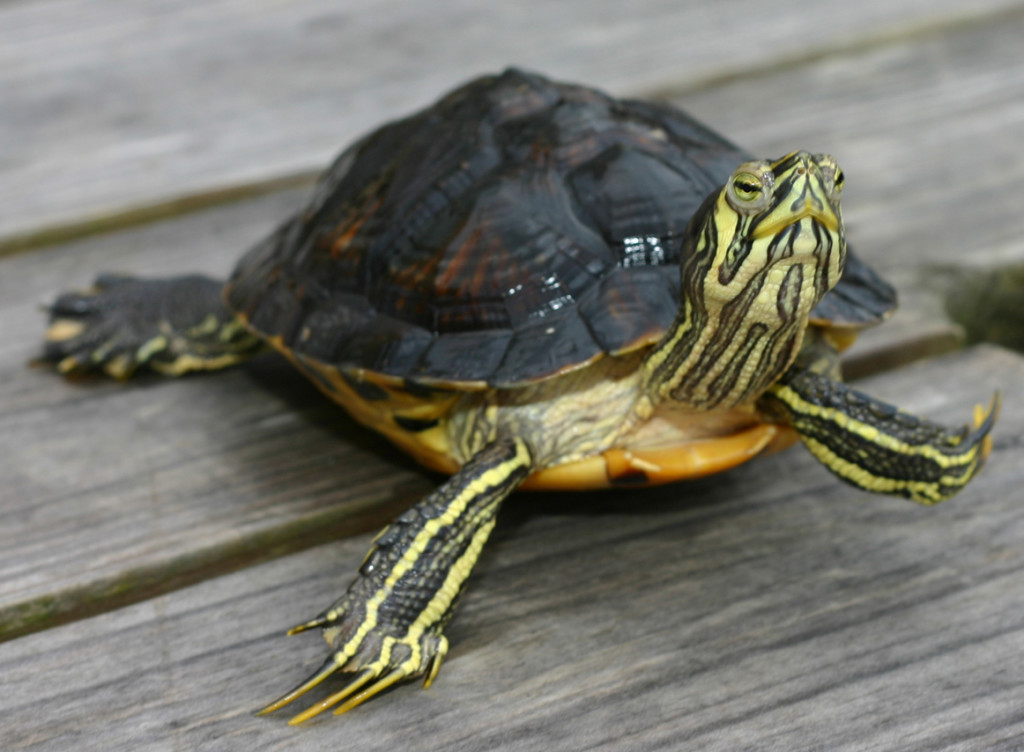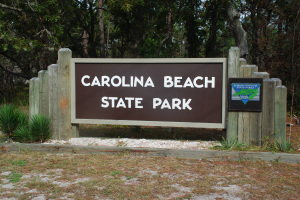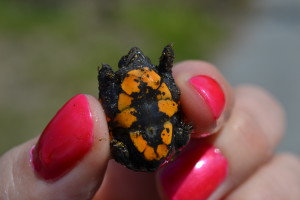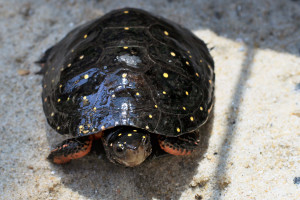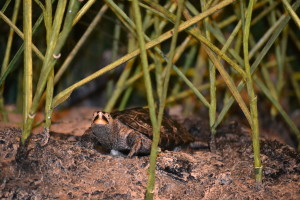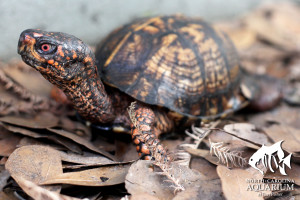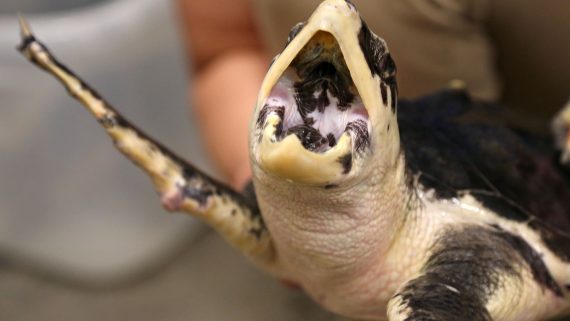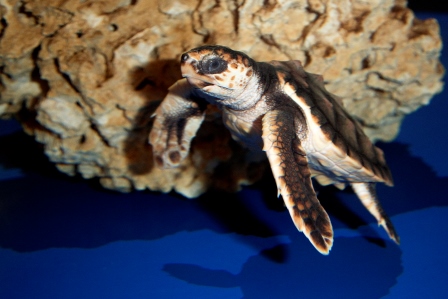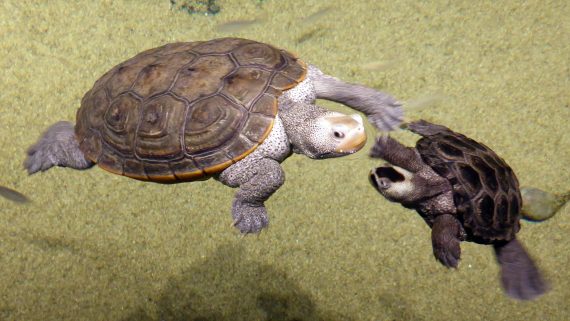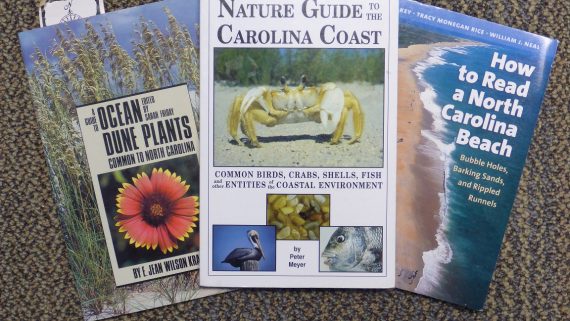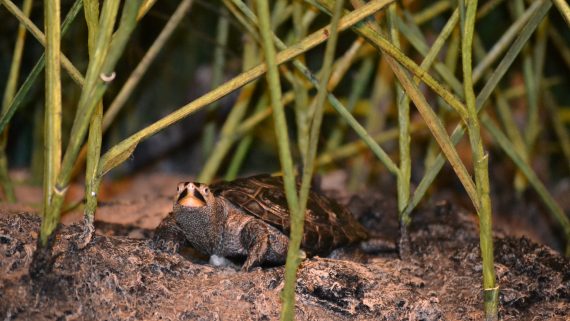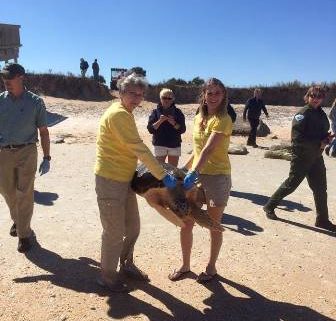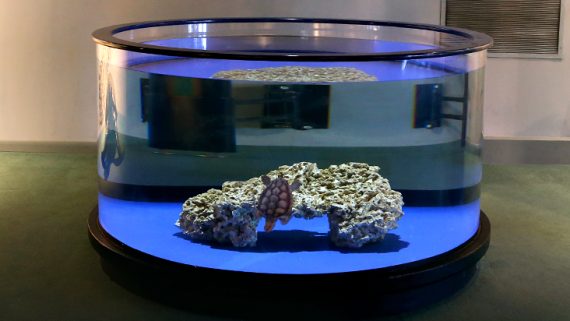The Turtles of Carolina Beach State Park
My name is Carla and I am a North Carolina Park Ranger at Carolina Beach State Park. As a child I was always playing outside no matter what the weather was like. There were no cell phones or X-Boxes at that time. We had to create our own entertainment.
I spent most of my free time outside exploring the plants and animals that lived near my house. I was always bringing home critters like baby rabbits and squirrels, birds, snakes, frogs and turtles. When I got older and went to college, it was a natural progression for me to major in something dealing with nature. Now, 30 some years later, I am still spending a lot of my extra time outside exploring nature.
Carolina Beach State Park is a wonderful place to explore nature. The park boarders the Cape Fear River which is brackish water meaning it is salty but not as salty as the ocean. All kinds of birds, insects, snakes, lizards, frogs and turtles call the park home. Turtles are one of my favorite animals to find. Each turtle is found in its own type of habitat.
If you are driving along the park road you may see a common snapping turtle emerge from the swamp across the road from the picnic area. These turtles spend most of their time in the mud of the swamp but will come out in the spring looking for a place to lay their eggs. Some can get quiet large, almost 60 pounds, and eat anything they can get their mouths around. Another turtle that can be seen around the swamp areas and in the Lily Pond is the Eastern mud turtle. Unlike the snapping turtle, this little brown turtle is a lot smaller and only grows to about 5 inches in length. These turtles are omnivores and will eat aquatic insects, tadpoles, and aquatic vegetation.
Another turtle seen in the swamp areas from time to time is the Spotted Turtle. Their populations are small because these turtles were collected and sold on the pet trade many years ago but are now on the N.C. State special concern list to protect them. If you see one of these beautiful turtles while in the park, it would be a special treat. These turtles, like the mud turtles, do not get very big. They are mostly carnivorous but will eat some aquatic vegetation and algae.
The yellow-bellied slider is another turtle that can be seen in the ponds and sometimes in the swamp at Carolina Beach State Park. Most of the time I see these reptiles sitting on logs in the water soaking up the sunshine. Turtles do this to warm up. Turtles are cold blooded, meaning they regulate their body temperature by whatever environment they are in. If they are cold, they move to a warmer area. If they are hot, they move to a shady spot. Their bodies have to be a certain temperature to be able to digest food properly. Sliders are omnivores and eat a variety of aquatic plants and animals.
So far all the turtles I have mentioned are found in fresh water, but you can also find turtles living in the salty brackish water of the Cape Fear River. One of these turtles is the Diamondback Terrapin. These turtles are found in the salt marshes in the park along the river. The terrapin can reach a size of 6 to 9 inches. They are mostly carnivorous and eat mollusks like the periwinkle snail and crustaceans like fiddler crabs. These terrapins are illegal to possess and are federally protected.
The river is also home to sea turtles. Usually you think of sea turtles living in the ocean, but they will also swim into the rivers to search for food. Occasionally a loggerhead turtle will pop its head up in the marina at the park. It looks like the end of a log popping up out of the water then going down, just like the old mariners described. That is how they got their names.
Last but not least is the Eastern Box turtle. This one is my favorite. All the other turtles found at Carolina Beach State Park live in the water or very near the water. This turtle is North Carolina’s only land turtle and is also the North Carolina state reptile. It carries its home with it wherever it goes. The box turtle is the only turtle that can close its shell completely, making it very hard to be eaten by a predator.
Eastern box turtles grow very slowly and can live a long time. Some grow up to eight inches in length. One way to find out the approximate age of the box turtle is by counting the “rings” on the costal scutes. These are the “scales” that make up the carapace or the top of the shell. Like a tree, the turtle will add a ring as it grows. Some rings may be so close it is hard to count.
Box turtles can be found almost anywhere in the park. They like different types of habitats. From muddy swamps to sandy pine savannahs these turtles like it all. They are omnivores and will eat most anything they can get in their mouths like the snapping turtles. Berries, insects, snails, earthworms, and mushrooms are all on its menu.
Did you recognize any of the turtle Carla mentioned? Do you see any around your house? Share what turtle you like to see in the comments below.
Just as Carla is lucky to protect the turtles at the park, we are lucky to protect the turtles at the aquarium. Our turtles are growing quickly here. This week Turtle A is 10.5 centimeters long and weighs 201.9 grams. Turtle B is 11.4 centimeters and weighs 266.8 grams. Not sure what to do with this weight and length? Learn more in our Hatchling to Yearling lesson plan. Join us next week for our last post of the year.


